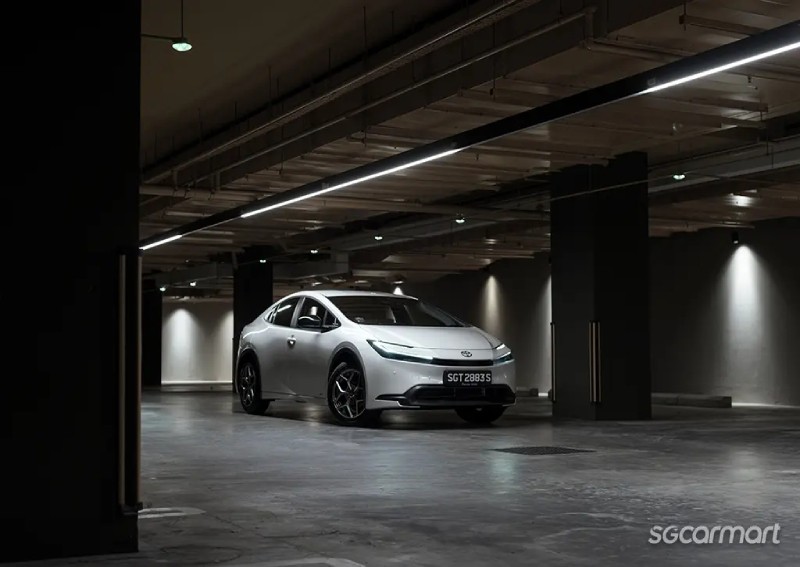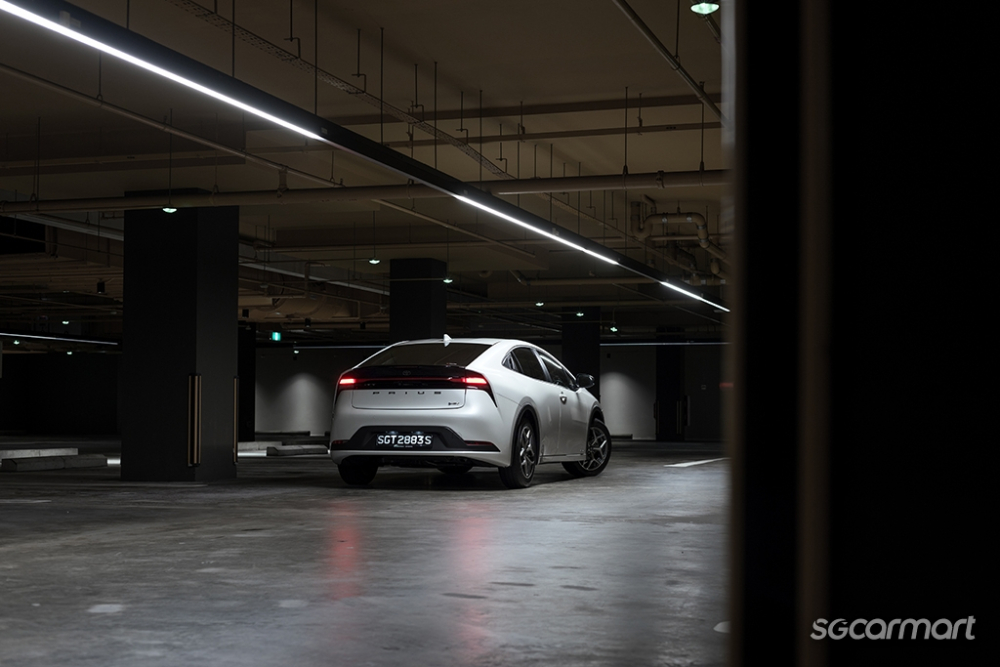Toyota Prius Hybrid review: Newfound appeal thanks to its new exterior and quality drive


I'm sure this no longer needs pointing out — but temperatures here have been soaring. The Meteorological Service Singapore states that it saw temperatures reaching as high as 36.3 degrees Celsius on March 24, 2024, and the mercury is still expected to climb for the rest of the year to beat those observed in 2023, which itself was a year that turned out to be the fourth-warmest year historically since the service began its records in 1929.
I've thankfully had the good luck of being able to complete my commutes over the past few days with this Toyota Prius, which comes with one frigid air-conditioning system.
And, gently embraced by its frosty emissions while being sheltered from the sun by the gently sloping roof that has become a Prius hallmark since its second generation, it's easy to agree with Akio Toyoda's expectations that conventional hybrids will continue to serve as a key mobility option for the masses, even as we strive towards decarbonisation.

It really isn't hard to see this Toyota Prius selling well here, especially given its new set of clothes.
Previous iterations of the car have ranged from being simply drab to just outright challenging to look at, but the new king of the hybrid game has broken with tradition and is now one attractive suitor.
Toyota's official figures for this car places it 59mm longer, 22mm wider, and, most crucially, 35mm lower than its predecessor. The net outcome being that the familiar fastback profile now has a new low-slung appeal.
My eyes find themselves unable to resist both the car's angular head lights as well as its gently tapered hips, even if the combination of its Platinum White Pearl exterior finish and the sun's piercing rays make a reactionary squint the rigour of the day.

A quick jab at the push-start button and a few prods at the accelerator pedal after has the Prius revealing that it has newfound dynamism to match its new looks.
Singapore-bound examples of the Prius continue to sport a 1.8-litre engine paired to a continuously variable transmission as before (a two-litre hybrid and a plug-in hybrid option are offered in other markets), but refinement levels from this drivetrain are significantly higher than what I remember of its predecessor.
That droning so associated with CVTs is sufficiently muted in this Toyota Prius so it now only becomes irritable when you've got the entire weight of your shin on the throttle.
And throttle response feels sharper here compared to its predecessor as well, with this Prius scarcely hesitating to dart into the numerous gaps that I plotted for it when we were both faced with congested traffic.

Toyota's 27-year expertise with building hybrid systems manifests itself here with the Prius delivering a fuel economy of 23.8km/L, despite my complete disregard for efficiency over the past days.
This figure is not only practically on par with the car's official thirst of 24.4km/L, but also ahead of the Hyundai Avante Hybrid we tested just a few weeks back.
Those looking for reasons to upgrade from the old car will find more improvements still when faced with an open curving road.
Where the old car always felt insufficiently damped, this Prius plots a fine mix of road pliancy and body control that should elicit approving nods from family members and eager drivers alike.
Road noise becomes rather apparent once you're up to speed, although I think the set of Bridgestone Ecopia EP150s this car was riding on should shoulder most of the blame.
And the steering wheel of the Toyota Prius also needs mention here. It's a pleasing thing to grip and hold, even if its unconventionally large centre that's festooned with buttons might not visually suggest so.
And it also now comes paired with a rack that allows it to offer a decent self-centring rate so you won't have your hands twirling all over when accelerating out of a U-turn — a gripe of the old car I always found just outright frustrating.

And should traffic grind to a complete halt, you will be able to take solace in the fact that this Prius comes with a decent cabin to simply sit in.
Gone are the white accent pieces and centrally-located instrument cluster, which were the objects of ridicule from so many in the previous car.
Instead, the Prius now adopts the seven-inch driver's Multi-info Display and steering wheel layout from the bZ4X, both paired with an aftermarket nine-inch infotainment system.
It's an overall smart looking cabin. Those more used to seeing but a few roundels in their instrument cluster will need only a moment of familiarisation to get up to speed with the seven-inch unit's somewhat cramped design and messy array of symbols, but the infotainment unit is less successful.

The nine-inch unit supports wireless Apple CarPlay and Android Auto, but otherwise delivers neither pleasing graphics nor an intuitive layout should you decide you need to change some of its settings.
Deleting my phone from the list of smartphone connections saved within it also took an absolute age.
Door cards, which comprise predominantly of hard plastic and feel hollow, as well as the use of a single-zone climate control system add to the car's shortcomings here, while at the back, a total boot space of 370 litres should be enough to see to your everyday family duties, but is still behind on the space offered by other family-oriented options available here such as the Mazda 3 Sedan, Volkswagen Golf, Skoda Scala, or the Hyundai Avante Hybrid.
Features including electrically adjusting seats and air-conditioning vents for the rear passengers are also absent in this Prius, and I'm certain those hidden hashtags on the centre console aren't going to become hot on any social media platform.

At $185,888, this Toyota Prius is competitively priced against the host of popular family-oriented options available here, which include the Mazda 3 Sedan (available from $169,888), or the Volkswagen Golf (which starts from $185,400).
These options, however, without the benefit of a hybrid drivetrain, will never reach the impressive fuel economy that the Prius has showcased today.
But shoppers here are more likely to lineup this Toyota Prius against the Hyundai Avante Hybrid, which comes in from $170,999, features a more impressive infotainment system, and, if you opt for the $176,999 Elite trim car, also comes with features including ventilated front seats and a wireless smartphone charger, both of which are absent on this Prius.
But if you're as much of a fan of the exterior design of this Prius as I am and value its newfound handling prowess, it will still serve as a capable, fuel-sipping family carrier.
And you can rest assured that your commutes will be kept comfortably cold, even when temperatures here continue to soar though the rest of 2024.
What we like
What we dislike
ALSO READ: All-new Toyota Prius Hybrid now available in Singapore